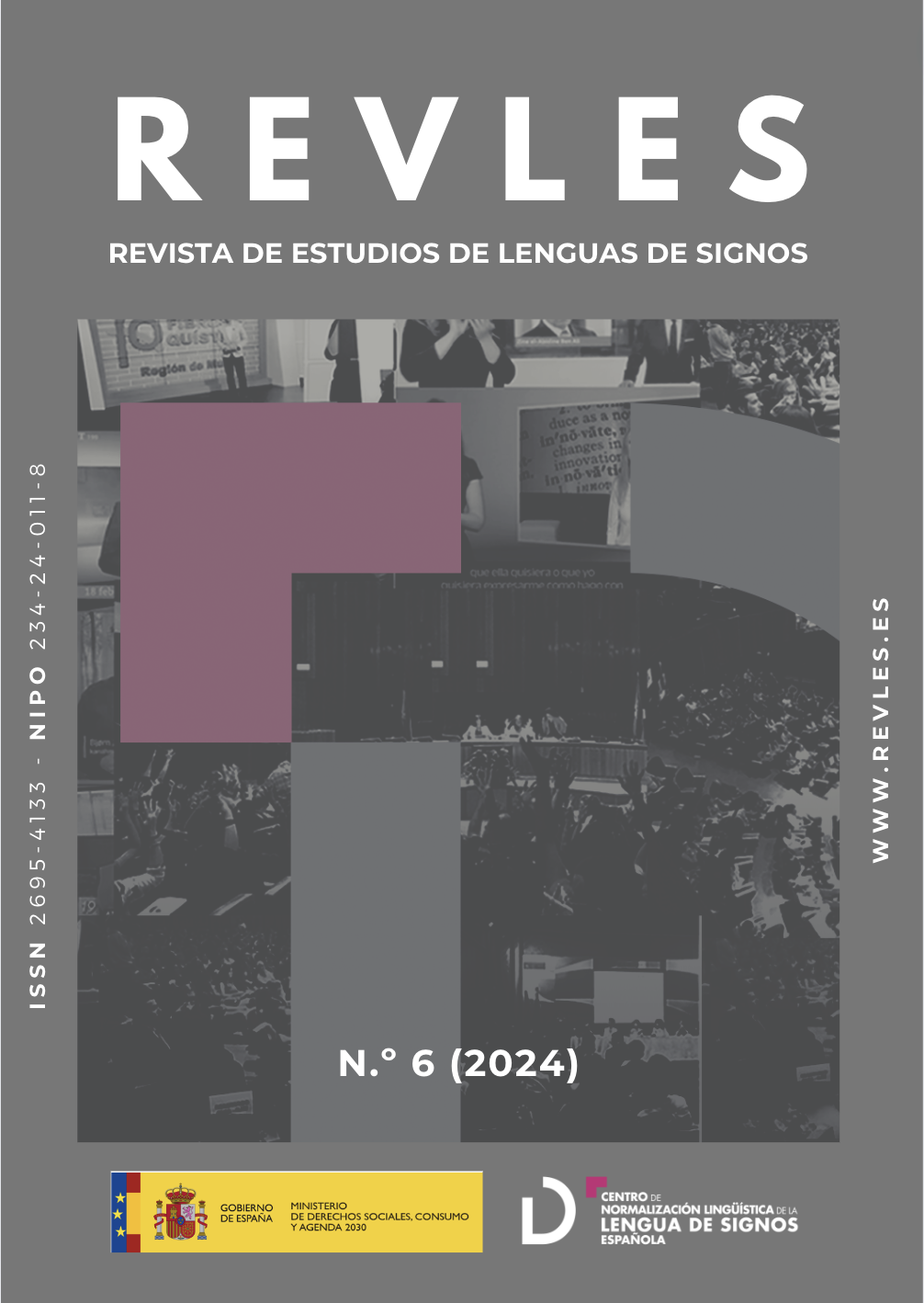Abstract
This article defines deafblindness, describes the most common communication methods, and the main professional figures who work with this group to contextualize and understand the importance of the Haptic communication system for deafblind individuals. It explains what the Haptic communication system consists of and how it allows for the simultaneous transmission of linguistic and extralinguistic information, significantly improving communicative accessibility and inclusion for deafblind individuals. Additionally, guidelines for the creation and implementation of the Haptic System in other countries are proposed, describing the necessary steps and the most relevant aspects of the process, highlighting its development in Spain. In this context, the fundamental role of the Federation of Associations of Deafblind People of Spain (FASOCIDE) and its working committee is emphasized, as they have adapted the system to the specific needs of the country and the deafblind individuals within the group. The culmination of this process is the creation of a guide that includes a glossary of the agreed signs. Practical examples of the use of the Haptic system are also provided, demonstrating its application in everyday situations. Finally, the main conclusions derived from the work carried out by FASOCIDE and its working committee are presented, highlighting the benefits of the Haptic system in terms of accessibility and participation for deafblind individuals.
References
Bascones Serrano, L. y Martínez Madrigal, B. (2023). Estudio sobre la situación de las personas sordociegas en España. Real Patronato sobre Discapacidad y Ministerio de Derechos Sociales y Agenda 2030.
Brioso Montaner, M. T. (2019). Desarrollo del sistema Haptic en España para potenciar la inclusión total de las personas Sordociegas [vídeo]. En CNLSE (Ed.), Congreso CNLSE de la Lengua de Signos Española, Madrid, 19 y 20 de septiembre de 2019. CNLSE. https://youtu.be/bOZfl_Zqxrc?feature=shared
Brioso Montaner, M. T. (2022). Avances del sistema Haptic en España [vídeo]. En CNLSE (Ed.), Congreso CNLSE de la Lengua de Signos Española, Madrid, 17-18 de noviembre de 2022. CNLSE. https://youtu.be/5U4FIBjU3jg?feature=shared
Creswell, J. (2014). Research design: Qualitative, quantitative, and mixed methods approaches. SAGE Publications.
Danish DeafBlind Association FDDB (2018). Haptic Signals: 139 new and known signals. Danish DeafBlind Association. https://www.deafblindinformation.org.au/wp-content/uploads/2021/05/haptic-signals-139-new-and-known-signals-english.pdf
FASOCIDE (2018). ASOCIDE: 25 años de lucha colectiva. FASOCIDE. https://www.fasocide.org/2018/02/05/asocide-25-anos-de-lucha-colectiva/
FASOCIDE (2021). Signo Haptic: Emergencia [vídeo]. FASOCIDE. https://www.youtube.com/watch?v=1XzOWhuNW9s
Gallego Venegas, M. y Díaz-Cardiel Muñoz, R. (2024). Contexto de la mediación comunicativa con personas sordociegas. Síntesis.
Gómez, P. y Romero. E. (Coord.) (2004). La sordoceguera: un análisis multidisciplinar. ONCE. https://biblioteca.fundaciononce.es/publicaciones/otras-editoriales/la-sordoceguera-un-analisis-multidisciplinar
Helen Keller National Center (2015). Haptic communication: The Helen Keller National Center's American edition of the original title Haptisk Kommunikasjon. Helen Keller National Center.
Ley 27/2007, de 23 de octubre, por la que se reconocen las lenguas de signos españolas y se regulan los medios de apoyo a la comunicación oral de las personas sordas, con discapacidad auditiva y sordociegas. Boletín Oficial del Estado, núm. 255, de 24 de octubre de 2007. https://www.boe.es/buscar/act.php?id=BOE-A-2007-18476
Organización Nacional de Ciegos de España ONCE (s.f.). DACTYLS: Sistema de comunicación para personas sordociegas. ONCE. https://www.dactyls.es
Real Decreto 674/2023, de 18 de julio, por el que se aprueba el Reglamento de las condiciones de utilización de la lengua de signos española y de los medios de apoyo a la comunicación oral para las personas sordas, con discapacidad auditiva y sordociegas. Boletín Oficial del Estado, núm. 174, de 19 de julio de 2023. https://www.boe.es/buscar/doc.php?id=BOE-A-2023-16650
Sieteiglesias Ávila, M. y Tejado Ocaña, R. (2021). Desarrollo del sistema Haptic en España para potenciar la inclusión total de las personas sordociegas. Revista de Estudios de Lenguas de Signos REVLES, 3, 184-186. https://revles.es/index.php/revles/article/view/67/47

This work is licensed under a Creative Commons Attribution-NonCommercial-NoDerivatives 4.0 International License.
Copyright (c) 2024 Rosa Tejado Ocaña, Marta Sieteiglesias Ávila
